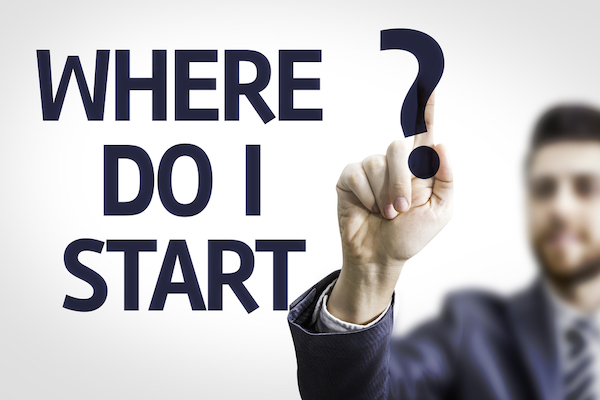Full Examination Requirements
Every dance association/society that offers qualifications has requirements that candidates have to complete to pass an examination.
IMPORTANT:
Below is a typical list of requirements as a guide. It is very important that you check the requirements of your own chosen association/society, although there will not be a great difference between associations/societies, it is vital to your success.
Some of the figures required in your chosen association/society examination may not be included in the lists below, if so, please contact us and we will add them to the studydance.me Associate course.
DANCE DEMONSTRATION:
You must demonstrate all 5 dances to music with a partner to an acceptable standard.
The majority of figures danced must be from the Associate syllabus.
SOLO DANCE DEMONSTRATION / STARTING A CLASS TO MUSIC:
Using the figures from associate dances, the examiner will select 3 figures from 2 dances, create routines for you to dance to music. You can choose whether to dance as the man or the lady.
In order to prove that you are able to start a class to music, you should clearly and with good voice projection count yourself into the routine and continue counting throughout.
THEORY:
You should have a good knowledge of the Chart Headings and be able to explain what the following refer to:
- Step Number
- Timing
- Beat Values
- Foot Position
- Footwork
- Action Used
- Body Turn
- Shaping
- Suitable Precedes and Follows
Knowledge and explanation is also required for:
- Time Signature
- Tempo
- Rhythm
- Inherent Amount of Turn
- Forward Walk
- Backward Walk
- Forward Walk Turning
- Backward Walk Turning
- Delayed Forward Walks (knee straight and knee compressed)
- Delayed Backward Walk
- Checked Forward Walk
- Latin Cross
- Cucaracha
- Poise
- Holds and the Basic Positions used in all dances
TECHNICAL THEORY:
You should be able to dance with confidence all the Associate figures in all 5 dances as both the man and the lady.
When answering questions on a particular figure you should first give either the:
step number, beat values or timing
plus the information required by the examiner on either:
- Foot Positions
- Footwork
- Amounts of Body Turn
- Action Used
- Shaping
- Suitable Precedes and Follows to the figures
- Samba Bounce Action
- Alignment
- Sway
COMPULSORY QUESTIONS:
You will be asked to describe:
RUMBA: Forward and Backward Walks.
SAMBA: Samba Bounce Action (see lesson devoted to this subject) – Pelvic action as used in Promenade Samba Walks (see lesson devoted to this subject).
PASO DOBLE: Basic Movement – Sur Place – March – Chasses to Left and Right – Appel.
CHA CHA CHA: Cha Cha Cha Chasse to Left and Right – Cha Cha Cha Locks Forwards and Backwards.
JIVE: Jive Chasse to Left and Right – Jive Rock – Alternative ways to dance a Jive Chasse and the different rhythmical interpretations.
TEACHING ABILITY:
Your ability to teach will be assessed on your performance, presentation and answers to the examiner’s questions.
LIST OF REQUIRED ASSOCIATE FIGURES:
RUMBA: Forward Walk ♦ Backward Walk ♦ Basic Movement ♦ Fan ♦ Hockey Stick ♦ Spot Turn to Left and Right ♦ Underarm Turn to Left and Right ♦ Check from Open Promenade Position ♦ Check from Open Counter Promenade Position ♦ Hand to Hand ♦ Natural Top ♦ Close Hip Twist ♦ Alemana ♦ Alemana from Open Position with Left to Right Hand Hold ♦ Open Hip Twist
SAMBA: Natural Basic Movement ♦ Reverse Basic Movement ♦ Progressive Basic Movement ♦ Samba Side Chasses ♦ Rhythm Bounce ♦ Samba Whisks to Left and Right ♦ Promenade on Left and Right Foot ♦ Stationary Samba Walks on Left and Right Foot ♦ Side Samba Walk ♦ Close Rocks on Right and Left Foot ♦ Volta Spot Turns to Right and Left ♦ Natural Roll ♦ Reverse Turn ♦ Travelling Botafogos ♦ Corta Jaca
CHA CHA CHA: Forward Walk ♦ Backward Walk ♦ Cha Cha Cha Chasses to Right and Left ♦ Cha Cha Cha Locks Forward and Backward ♦ Time Step ♦ Close Basic ♦ Open Basic ♦ Fan ♦ Hockey Stick ♦ Spot Turn to Left and Right ♦ Underarm Turn to Left and Right ♦ Check from Open Promenade Position ♦ Check from Open Counter Promenade Position ♦ Hand to Hand ♦ Natural Top ♦ Close Hip Twist ♦ Alemana ♦ Alemana from Open Position with Left to Right Hand Hold ♦ Open Hip Twist
PASO DOBLE: Sur Place ♦ Basic Movement ♦ March ♦ Appel ♦ Chasses to Right and Left ♦ Elevations to Right and Left ♦ Chasse to Left ended in Promenade Position ♦ Huit ♦ Attack ♦ Separation ♦ Promenade Close ♦ Sixteen♦ Promenade ♦ Twist Turn
JIVE: Jive Rock ♦ Chasses to Left and Right ♦ Basic in Place ♦ Basic in Fallaway ♦ Change of Place Right to Left ♦ Change of Place Left to Right ♦ Link ♦ Change of Hands Behind the Back ♦ Whip ♦ Promenade Walks Slow and Quick ♦ American Spin
Examination Duration:
The examination times may differ from one association to another, as a guide, the examination will last 1 hour and 45 minutes.
And finally!
Following a successful result, you will be invited to pay a joining fee and yearly subscription to become a member of a respected professional dance association and be recognised as a
Qualified Professional Dance Teacher.



No Comments